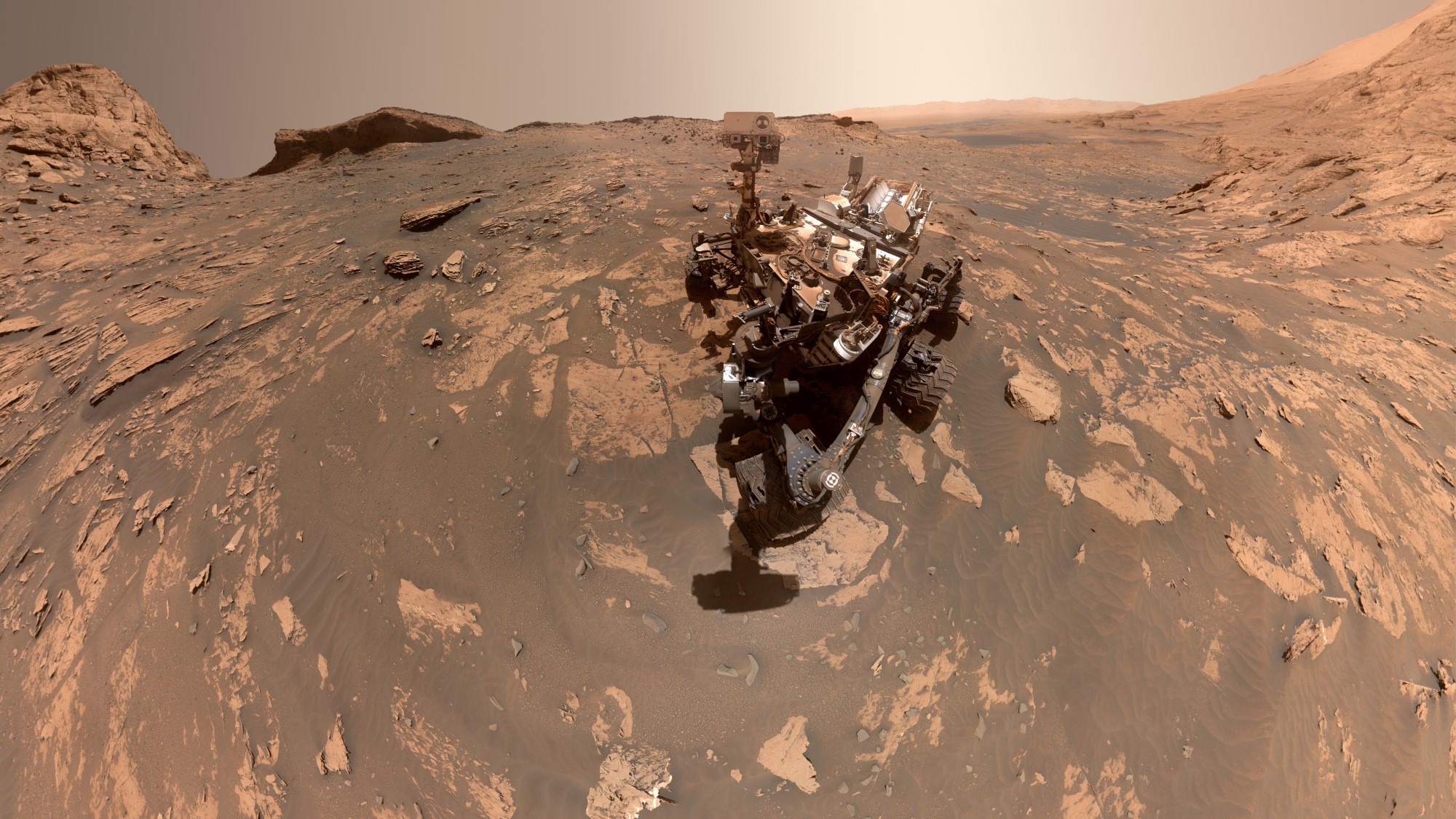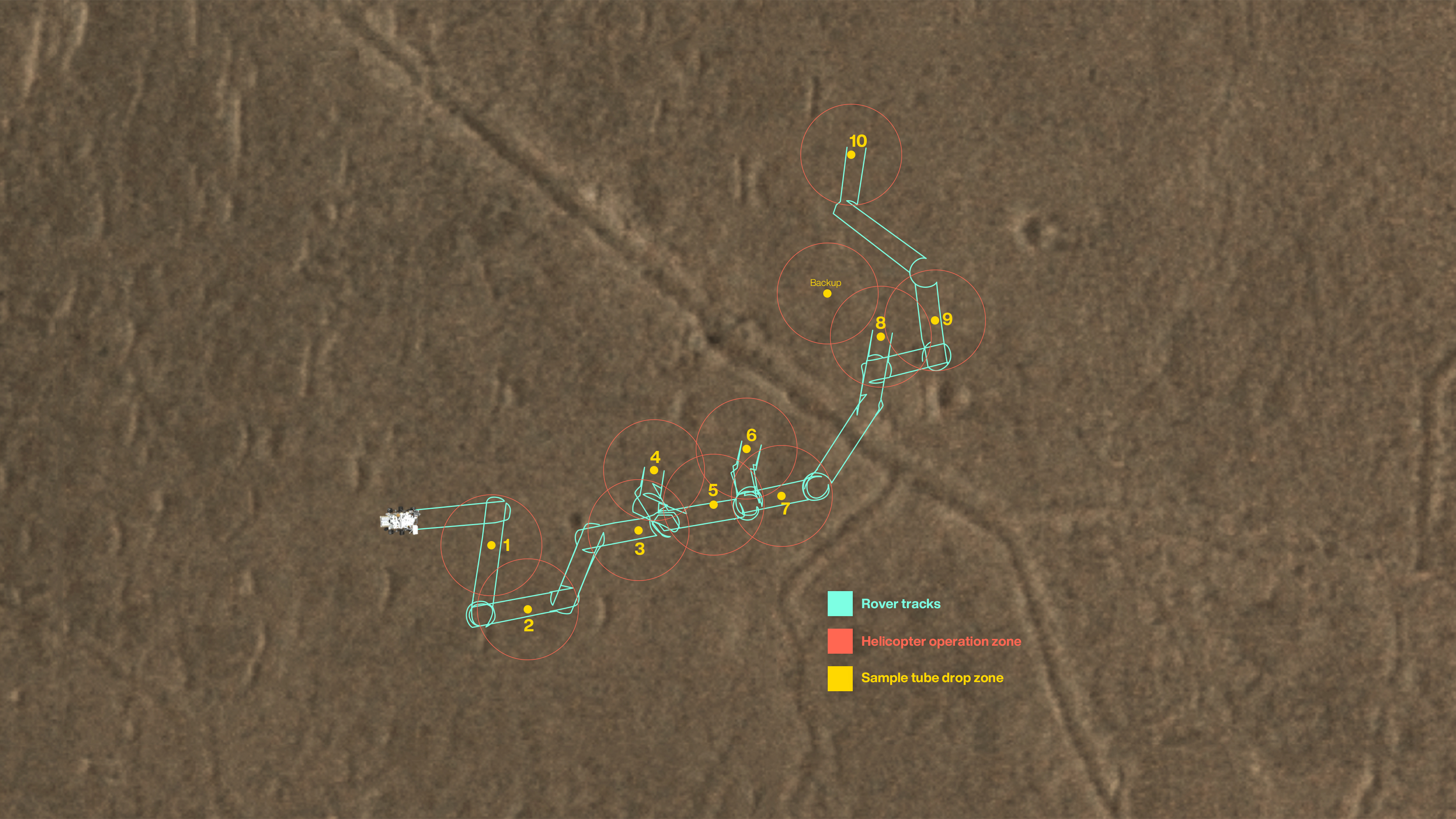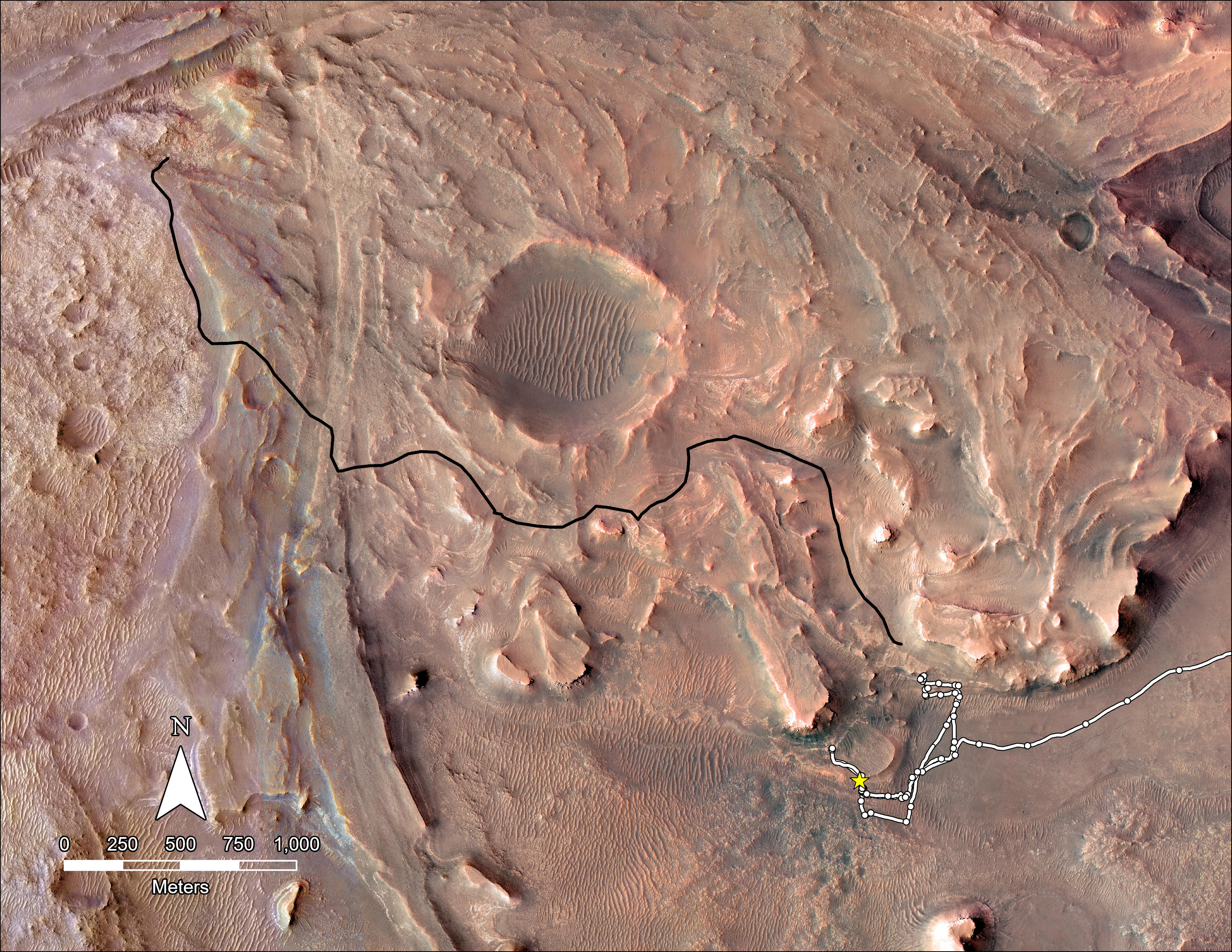Perseverance Mars rover to start caching samples for future return to Earth

NASA's Perseverance Mars rover is about to drop some precious cargo.
The car-sized Perseverance rover has been collecting samples of Martian rock, dirt and air since touching down inside the Red Planet's Jezero Crater in February 2021. That material will be returned to Earth by a joint NASA-European Space Agency (ESA) campaign as early as 2033, if all goes according to plan.
The rover is about to notch a big milestone in the sample-return effort — the establishment of its first Mars sample depot, which is expected to begin in the next few days, NASA officials said in an update on Friday (Dec. 16).
Related: 12 amazing photos from the Perseverance rover's 1st year on Mars
That depot, in a flat patch of Jezero's floor nicknamed Three Forks, will consist of 10 sealed titanium sample tubes, which Perseverance will drop over the course of 30 days or so.
The samples headed for the depot "are an incredible set representative of the area explored during the prime mission," Mars Sample Return program principal scientist Meenakshi Wadhwa, of Arizona State University, said in Friday's update.
"We not only have igneous and sedimentary rocks that record at least two and possibly four or even more distinct styles of aqueous alteration, but also regolith, atmosphere and a witness tube," she added. (Witness tubes are designed to help mission team members determine which materials in the collected samples, if any, may be contaminants from Earth.)
Breaking space news, the latest updates on rocket launches, skywatching events and more!
Jezero harbored a big lake and a river delta billions of years ago, which is the main reason the crater was the destination chosen for Perseverance's mission. In addition to its sample-collecting work, the rover is hunting for signs of ancient Mars life in Jezero's rocks.
To date, Perseverance has collected 18 samples. On board, 15 tubes contain drilled-out cores from intriguing target rocks, two harbor regolith (dirt and gravel) and one is filled with Martian air. This "atmospheric sample" is the result of Perseverance's first-ever sampling try, which failed due to the crumbliness of the target rock.
The rover team is collecting two core samples from each target rock. Perseverance will retain one set on its body and drop the other set in depots, such as the one planned for Three Forks.
The baseline Mars sample-return plan calls for Perseverance to deliver its samples to a NASA lander with a built-in rocket, which will then launch the material to Mars orbit. An ESA spacecraft will snag the sample container high above the Red Planet and haul it back to Earth.
The lander, Mars rocket and ESA orbiter won't launch until the 2027-2028 timeframe, however. Perseverance is in good health, but there are no guarantees that the six-wheeled robot will still be operational when the sample-return hardware makes it to the Red Planet. So mission team members came up with a backup delivery plan, which is where the Three Forks depot comes in.
The sample-return lander will carry two helicopters similar to Ingenuity, the little chopper that flew with Perseverance to Mars and is currently serving as a scout for the rover. Those future rotorcraft will ferry Perseverance's samples from the depot back to the lander if the rover isn't up to the job.
The sample-retrieval helicopters will be capable of carrying just one tube at a time, so Perseverance's depot drop must be designed accordingly.
"Up to now, Mars missions required just one good landing zone; we need 11," Richard Cook, Mars Sample Return program manager at NASA's Jet Propulsion Laboratory (JPL) in Southern California, said in Friday's update.
"The first one is for the Sample Retrieval Lander, but then we need 10 more in the vicinity for our Sample Recovery Helicopters to perform takeoffs and landings, and driving too," he added.
Perseverance will therefore drop its tubes onto the red dirt at Three Forks in a zigzag pattern, with each one 16 feet to 49 feet (5 to 15 meters) away from its closest neighbor, NASA officials said.
Related: Mars sample return mission adds 2 helicopters, scraps 'fetch' rover
Another big milestone is also approaching for the Perseverance team — the end of the rover's prime mission. That will come on Jan. 6, which is one Mars year (about 687 Earth days) after its Feb. 18, 2021 touchdown.
But don't fret: Perseverance will continue rolling along after that on an extended mission, which should see the rover explore some exciting and intriguing places.
"We will still be working the sample depot deployment when our extended mission begins on Jan. 7, so nothing changes from that perspective," Art Thompson, Perseverance's project manager at JPL, said in Friday's update. "However, once the table is set at Three Forks, we'll head to the top of the delta. The science team wants to take a good look around up there."
This "Delta Top Campaign" is expected to begin in February and last about eight months. During that time, the mission team will look for rocks carried into Jezero by the river that flowed there long ago.
"The Delta Top Campaign is our opportunity to get a glimpse at the geological process beyond the walls of Jezero Crater," Katie Stack Morgan, deputy project scientist for Perseverance at JPL, said in Friday's update.
"Billions of years ago, a raging river carried debris and boulders from miles beyond the walls of Jezero," she added. "We are going to explore these ancient river deposits and obtain samples from their long-traveled boulders and rocks."
Mike Wall is the author of "Out There" (Grand Central Publishing, 2018; illustrated by Karl Tate), a book about the search for alien life. Follow him on Twitter @michaeldwall. Follow us on Twitter @Spacedotcom or on Facebook.

Michael Wall is a Senior Space Writer with Space.com and joined the team in 2010. He primarily covers exoplanets, spaceflight and military space, but has been known to dabble in the space art beat. His book about the search for alien life, "Out There," was published on Nov. 13, 2018. Before becoming a science writer, Michael worked as a herpetologist and wildlife biologist. He has a Ph.D. in evolutionary biology from the University of Sydney, Australia, a bachelor's degree from the University of Arizona, and a graduate certificate in science writing from the University of California, Santa Cruz. To find out what his latest project is, you can follow Michael on Twitter.


